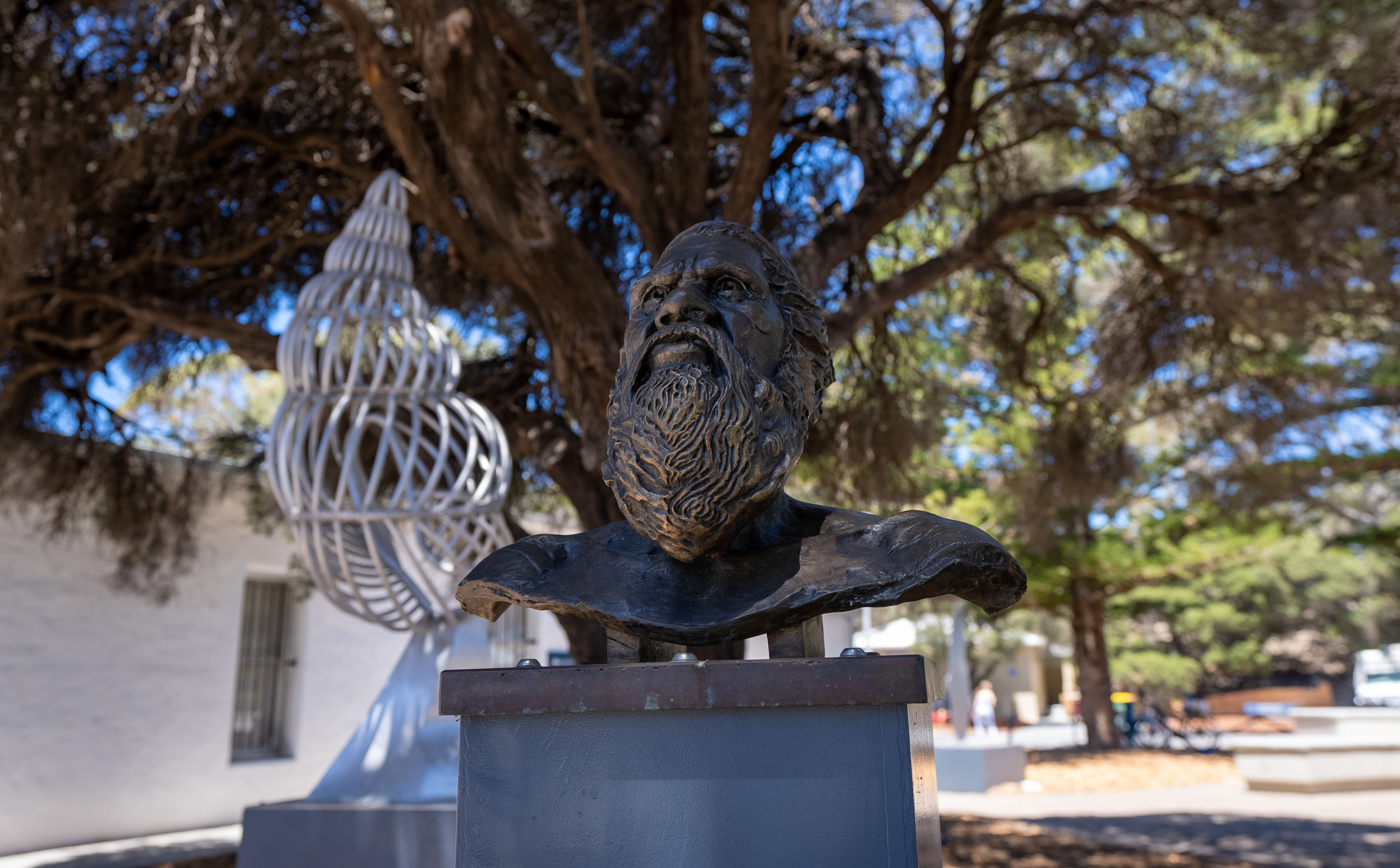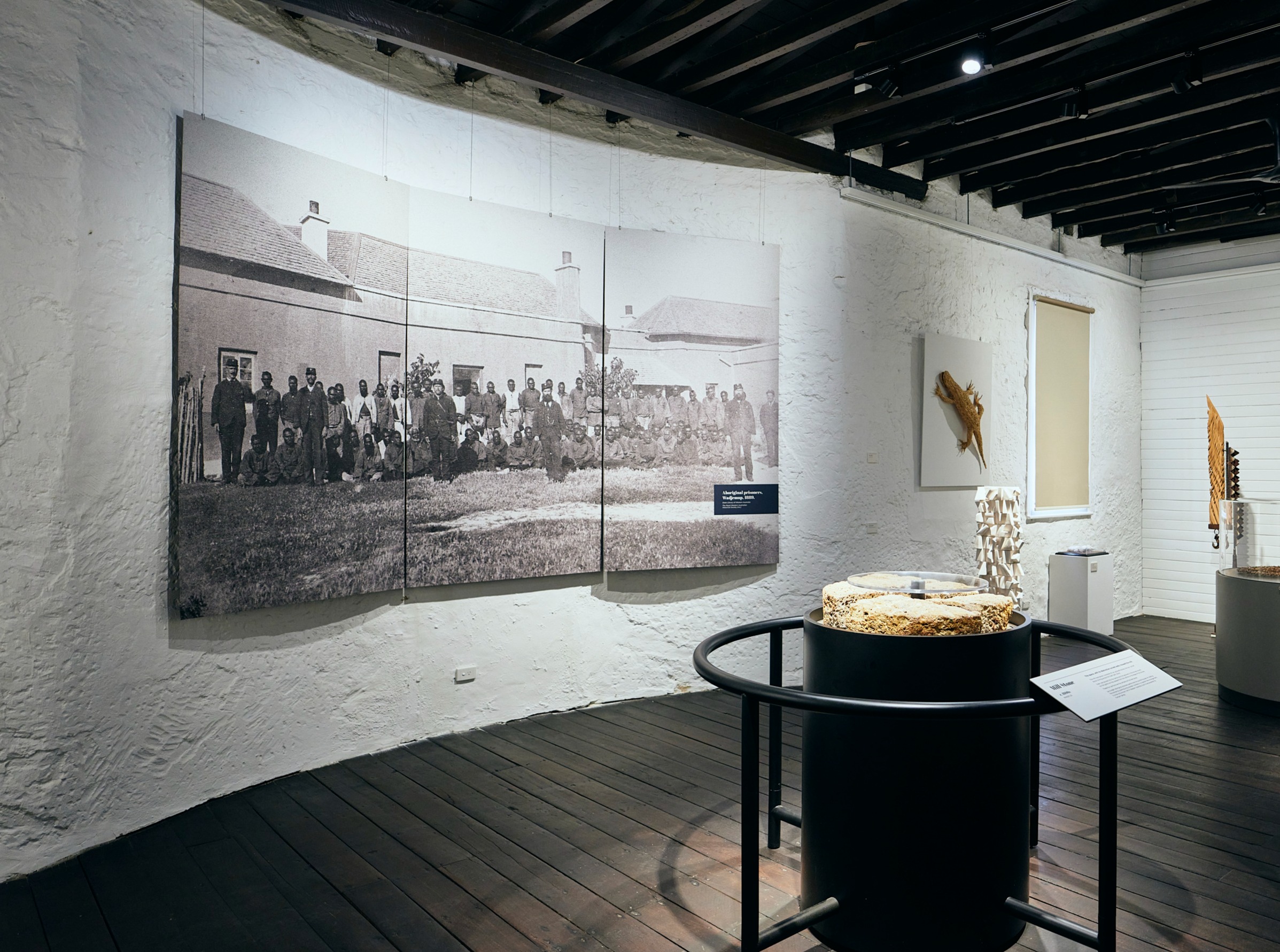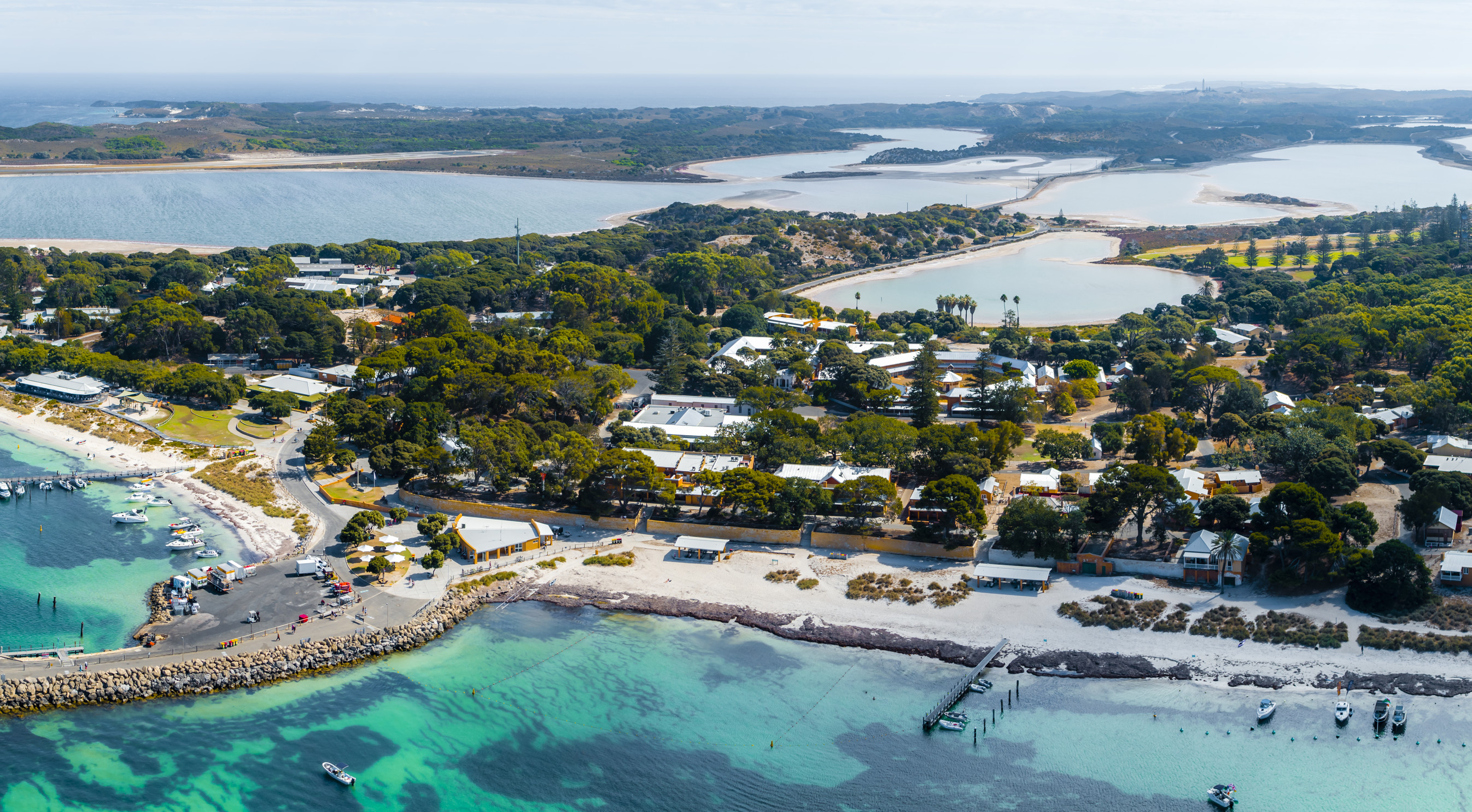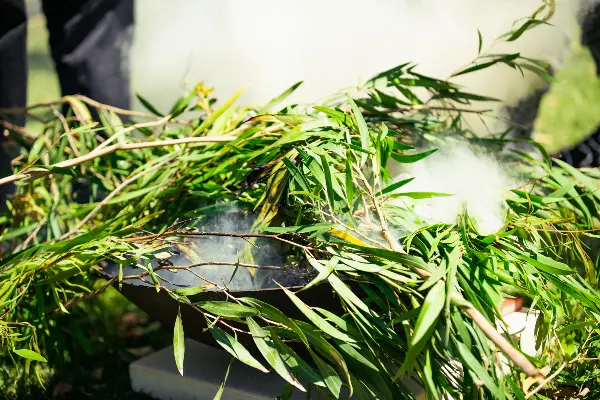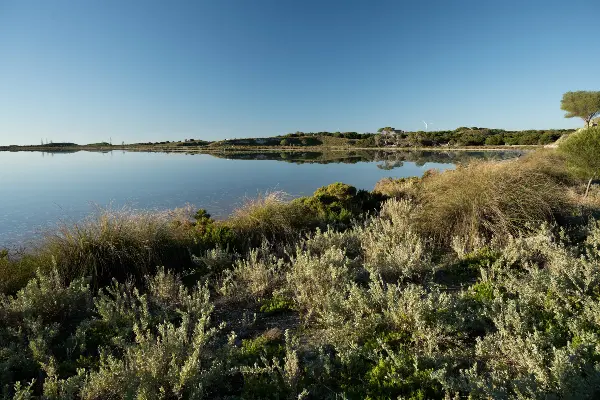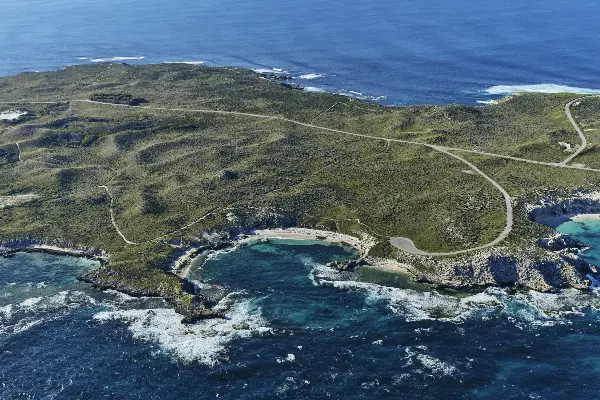Aboriginal History
Visitors are also advised that this content contains material, including historical names and images, which relate to the island’s prison era and may be confronting and/or challenging.
The Rottnest Island Authority does not endorse the language and views of the past, and sincerely apologises for any distress this content may cause.
A tale of two histories
For Aboriginal people across Western Australia, Wadjemup / Rottnest Island is a significant place. Once connected to the mainland some 6,500 years ago, Wadjemup was used by the Whadjuk Noongar people for important ceremonies and meetings. After the sea levels rose Wadjemup was no longer accessible by land and there is no physical evidence that Whadjuk Noongar people visited Wadjemup after the completion of islandisation and European settlement.
Following the colonisation of Western Australia in the early 1800s, Wadjemup played an increasingly sorrowful role in Aboriginal history. European settlers established Wadjemup first as a prison, incarcerating thousands of Aboriginal boys and men from across Western Australia, then as a forced labour camp – known as the Rottnest Island Aboriginal Establishment.
The dissolution of culture
State records indicate that 3,700 Aboriginal men and boys were imprisoned at Wadjemup between 1838 and 1931. There were children as young as eight and adults as old as 70; many were leaders, lore men and warriors, and the removal from their communities had lasting effects.
With the loss of their leaders, many Aboriginal communities across Western Australia also lost their role models, decision-makers, and cultural historians — the lore men and Elders who gave guidance and passed on important knowledge. As a result, many Aboriginal communities were forced to merge, putting untenable pressure on the remaining leaders due to tribal differences and over-stretched populations.
Many Aboriginal women found themselves as single parents, and without support from their menfolk and leaders, were forced to adopt colonial customs. Consequently, tribal protocols and cultural practices were neglected due to a lack of opportunities, guidance, and support.
Prison was a terrifying punishment for Aboriginal people. In Aboriginal society or lore, there was nothing like it, and the separation from people, land and culture had devastating effects.
An island prison
The Rottnest Island Establishment
Founded in the late 1830s, the Establishment was thought by the colonial authorities to be a more progressive and humanitarian form of incarceration for Aboriginal people compared to the close confinement and cold stone environment of mainland, European-style jails.
The intention was for Aboriginal prisoners to learn ‘useful’ skills, such as farming and building and so they could more easily transition into the new colonial culture upon their release.
Over the Establishment's 93 years, numerous Aboriginal prisoners were sent to Rottnest Island for offences ranging from petty felonies to murder. Not all of these prisoners were guilty however, with many admitting to the charges in order to avoid physical brutality.
The Establishment operated through three distinct periods which were marked by temporary closures and changes in operational procedures.
The early years
The first six Aboriginal prisoners were transferred to the Establishment in 1838, but no preparations had been made for their arrival. Due to the lack of buildings, the prisoners were forced to shelter in a since-eroded coastal cave near Bathurst Point for several nights.
Over the next 11 years, prisoners were sent to the Establishment for mostly petty crimes that included theft, sheep-spearing, threats to settlers, and tribal disputes. During this time, prisoners undertook gardening, building construction and farming on the island.
The island’s original colonial infrastructure was built by the prisoners, including the seawall, the Quod, and the Superintendent’s cottage. In 1842, the prisoners also assisted with the construction of the first lighthouse on the island – the original Wadjemup Lighthouse.
Although the prisoners’ labour ensured that great progress was made in establishing infrastructure on the island, there was some concern for the prisoners’ wellbeing during this early period.
Henry Trigg, the civil engineer working on the original Wadjemup Lighthouse, recorded in his journals the negative psychological impact of incarceration on the Aboriginal prisoners. However, Mr Trigg’s concerns were relatively insignificant when compared to the physical punishment inflicted on the prisoners at the hands of Superintendent Henry Vincent which led to the death of many prisoners through neglect or mistreatment.
In 1849, Vincent's cruelty led to the first closure of the Establishment, and most of the prisoners were returned to mainland jails.
The grim years
After reopening the Establishment in 1855, more than 3,000 prisoners were transferred onto the island.
Henry Vincent returned as Superintendent, but his ongoing harsh administration was soon the subject of several official inquiries.
Over the coming years, a fire caused significant damage to the prison which reduced its capacity. This event, along with prisoners being given longer sentences, meant that the facility soon became overcrowded and living conditions steadily worse. When influenza and measles epidemics struck in 1883, it was impossible to isolate the sick and over 60 prisoners lost their lives in one epidemic alone.
As time passed, the Establishment changed from a vision of a training institution to a bleak, unforgiving prison.
In most cases, introduced diseases caused prisoner deaths. However, the transfer of Aboriginal men from the tropical climates of the north to the cold south also contributed to sickness.
Along with the brutal living conditions, the Aboriginal prisoners were forced to undergo strenuous labour, such as turning the mill to grind flour in the building that now houses the Wadjemup Museum. They were only fed a meagre diet of gruel that provided little in the way of nutrition or sustenance for such work and could only supplement their diet by hunting when they were permitted.
As the death toll rose, concerns around the conditions on Rottnest Island were raised in Parliament and many investigations were conducted, but the resulting recommendations were continually suppressed. It was even suggested that some prisoners had left the island in better health than when they arrived, which caused them to recommit offences in order to be returned.
Aboriginal prisoners continued living in harsh conditions with inadequate food and shelter, but it wasn’t only the physical environment that had an impact on them.
Long-term prisoners became severely depressed due to the forced displacement from their Country and community and the severed spiritual connection to the land that sustained them psychologically as well as physically.
Finally, in 1883 after more concerns were raised in Parliament, plans were put in place to shut the Establishment again, though it took until 1902 for the facility to be formally closed.
Just prior to this, Wadjemup’s only female prisoner was incarcerated on the island.
In 1894 a motion was raised in Parliament that the island should be opened to the public as a summer resort. While this was rejected, the concept eventually gained more interest in the ensuing years.
A new identity
Two years after the Establishment was closed, the Government declared Rottnest Island a penal outstation, annexed to Fremantle Prison.
A new area was set down for the prison facility, with the rest of the island opened up to tour groups and holidaymakers.
For several years, the prisoners continued to occupy the old prison (known as the Quod) but plans were soon made to relocate them due to it being allocated as future holiday accommodation.
In 1904, European prisoners arrived and in the following years there were as many as 40 prisoners on the island – about one in ten of whom were Aboriginal. The Aboriginal prisoners were assigned menial tasks such as cutting firewood, washing clothes, cleaning and tending to the livestock. In contrast, the European prisoners were given more responsibility and worked as cooks, kitchen hands, clerks, stablemen, blacksmiths and carters.
In 1917, the Rottnest Island Board of Control was appointed to manage the island. At the same time, the island was declared as a Class A Reserve for public recreation - creating a significant shift from the prison era to one of tourism and increasing general public interest in the island as a holiday destination.
By 1931, the last prisoner on Rottnest Island, an Aboriginal man by the name of Maitland Narrier, was escorted to the mainland. This marked the end of the era of the Rottnest Island Establishment.
The Burial Ground
A key reason why Wadjemup is painfully significant to Aboriginal communities today is the burial ground that is located in the settlement.
Aboriginal men and boys who died in custody were buried in unmarked graves on Wadjemup during the operation of the Rottnest Island Aboriginal Establishment.
Many of the deaths resulted from epidemics of influenza in 1883, which swept through the Establishment due to overcrowding. The lack of sanitation and nutrition, living and working in extreme weather, and physical and psychological abuse also contributed to the deaths.
After the prison closed, one of Australia's largest Aboriginal burial grounds was largely forgotten about. The island became a holiday resort and the area where the Aboriginal burial ground lay became a budget camping ground known as Tentland.
During the earthworks for extending the sewerage scheme to the golf club in 1970, human remains were discovered. There was no public announcement of the discovery, and the remains were reburied.
Many people – especially Aboriginal people – felt that the failure to recognise the discovery of the graves was callous and disrespectful. It wasn’t until 1985 that the cemetery was recorded and protected under the Aboriginal Heritage Act 1972.
In 1992, the assumed cemetery area was fenced off and signs erected to inform the public of the site’s significance. Then in 1993, more bone fragments were found in the island’s main camping area about 100 metres from the known Aboriginal cemetery site. This discovery instigated a significant acknowledgement by the State Government in 1994 to recognise Wadjemup as the largest site of Aboriginal Deaths in Custody in Australia.
In 2007, Tentland officially closed to protect the graves of the Aboriginal men and boys.
In 2018, after more than a century of operating as tourist accommodation, the Quod closed its doors. This was a significant and welcome step towards recognition, reconciliation and healing for Aboriginal people.
Steps towards reconciliation
- The Wadjemup Aboriginal Reference Group (WARG) is a Cabinet-appointed advisory group to the Rottnest Island Authority (RIA). It was established in 2017 and their role is to advise RIA on all Aboriginal cultural matters in relation to the day-to-day functioning of the island.
- In 2020, the Government of Western Australia announced support for a new process of reconciliation and healing with Aboriginal communities across the State, led by Whadjuk Noongar people as the Traditional Owners of Wadjemup. The Wadjemup Whadjuk Cultural Authority Reference Group was established in 2021 to lead the State-wide consultation regarding the future of the Burial Ground and the Quod. The Wadjemup Project will focus on how to commemorate the Aboriginal boys and men buried on the island and the future use of the old prison building (the Quod).
- Rottnest Island Deaths Group Aboriginal Corporation (RIDGAC) formed in 1993 has raised awareness of the history of the Aboriginal prisoners, the Quod and burial ground.
- The South West Native Title Settlement is the largest native title settlement in Australian history. The Settlement is made up of six Individual Land Use Agreements, including the Whadjuk People (Perth Metropolitan area). The Whadjuk Regional Corporation has a Cultural Advice Committee (CAC) which is made up of Elders who consider matters relevant to culture and make decisions to promote and protect cultural interests.





